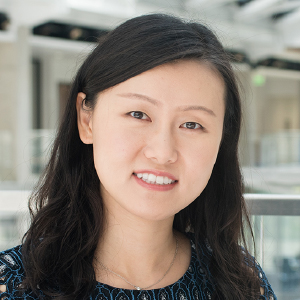In recent years, nano-tents and nano-bubbles formed by two-dimensional (2D) crystals have seen a surge of interest because they are able to induce in-plane strain and strain gradient via easy-to-apply out-of-plane deformations. We measure their profiles through atomic force microscopy (AFM) and adopt the membrane limit of the Föppl-von Kármán (FvK) theory to unveil what sets the in-plane strains in terms of the shape characteristics and boundary conditions of nano-tents and nano-bubbles.

Moreover, out-of-plane poking or bulging, also known as indentation or blister tests, are popular methods to characterize the in-plane elasticity of thin sheets. However, we find that recent experimental results of 2D crystals do not follow the well-known load-cubic-deflection relation when indenting linear elastic sheets, which can be attributed to the slippage of atomically smooth 2D materials against their supporting substrates. Besides, the interfacial slippage could cause instabilities such as radial wrinkles in the suspended region, with finite and predictable lengths.
We identify a single dimensionless parameter governing these mechanical responses—the sliding number—defined by comparing the sheet tension (that drives the slippage) with the interfacial traction (that resists the slippage). We discuss several useful asymptotic behaviors emerging at small and large sliding numbers. Through a parent-satellite bubble system, we are able to determine the transition from membrane theory to plate theory and from Griffith-type interface to cohesive-zone-type interface. These analysis also help us determine where continuum mechanics breaks down.
Dr. Nanshu Lu is the Frank and Kay Reese Professor at the University of Texas at Austin. She received her B.Eng. with honors from Tsinghua University, Beijing, Ph.D. from Harvard University, and Beckman Postdoctoral Fellowship at UIUC. Her research concerns the mechanics, materials, manufacture, and human / robot integration of soft electronics.
She is a ASME Fellow and a Clarivate highly cited researcher. She is currently an Associate Editor of Nano Letters and Journal of Applied Mechanics. She has been named to 35 Innovators under 35 by MIT Technology Review (TR 35) and iCANX/ACS Nano Inaugural Rising Star. She has received U.S. NSF CAREER Award, US ONR and AFOSR Young Investigator Awards, 3M non-tenured faculty award, and the 2022 Thomas J.R. Hughes Young Investigator Award from the ASME Applied Mechanics Division. She was selected as one of the five great innovators on campus and five world-changing women at the University of Texas at Austin.